Review and photos by John Hall
In their reconstruction of the dinosaur Nothronychus, CollectA have produced a very good, very strange-looking model. To understand why this apparently unflattering description is a compliment and not a contradiction in terms, we need to review just a little background on Nothronychus and the therizinosaurs – the truly remarkable group of dinosaurs to which Nothronychus belongs. Stranger animals than therizinosaurs have been reported from time-to-time – but not by reliable witnesses. They were among the most bizarre vertebrates ever to have lived! For starters, like sauropods, they had a long neck and tail, but walked bipedally on their hind-legs like carnivorous dinosaurs. In fact, it is now generally accepted that therizinosaurs were an unusual side-branch of carnivorous dinosaur evolution, that had abandoned eating meat and evolved into vegetarians (the leaf-shaped teeth are the best evidence for this)! However, the really amazing feature of therizinosaurs were the huge, sickle-like claws on their hands. These astonishing claws make therizinosaurs look like the deranged imaginings of some B-grade science fiction movie monster designer, but they are well-supported by fossil finds – the animals really looked like this!
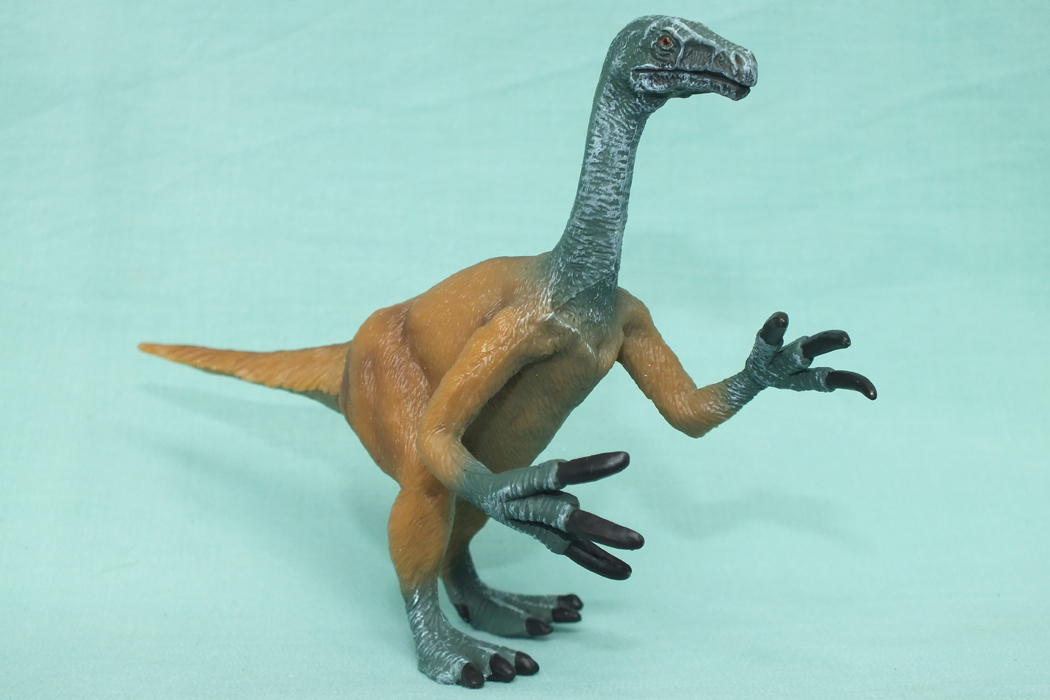
CollectA’s model of Nothronychus does a good job at portraying these extraordinary therizinosaur characteristics. The model gives a lively and convincing impression of a real animal, and the sculptor has beautifully balanced the figure so that it stands easily on its hindlegs, with the clawed arms outstretched in a suitably expansive gesture (in life, it’s thought these huge claws were used to drag down tree branches for the animal to feed on foliage, but this is really just a guess – perhaps they also served a defensive function). Nothronychus is an important dinosaur because the species N. graffami from Cretaceous North America (first described in 2009) represents the most complete therizinosaur skeleton yet found. Hence Nothronychus is the “template” upon which all other therizinosaur restorations are based (Therizinosaurus itself is more famous animal, and the subject of several models, but it is known only from the fossilised arms and claws).
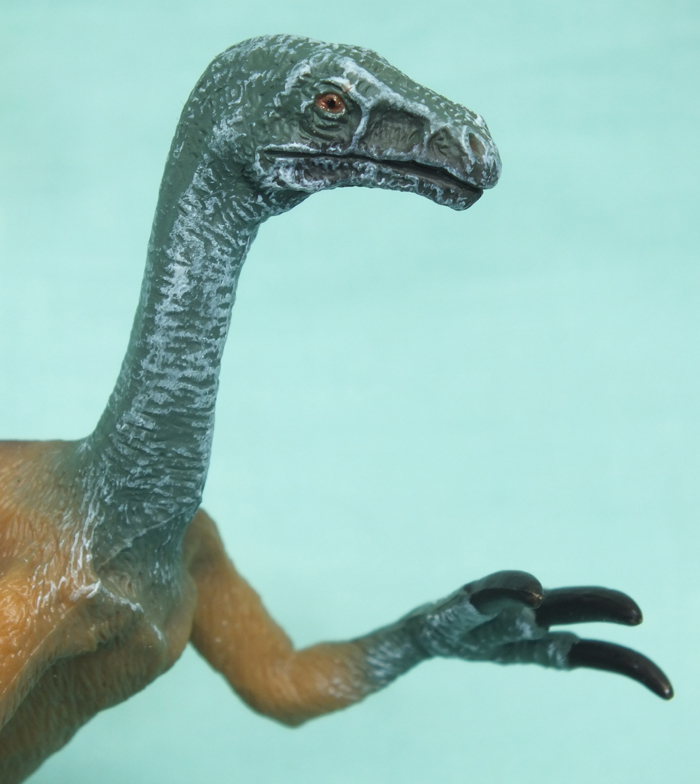
As those already familiar with the standard CollectA range will be aware, this is a relatively small model, which makes the quality of the sculpting all the more impressive. I particularly liked the attention given the head and face, which gives the whole restoration an expressive and naturalistic character. The main anatomical fault of this figure that I can see is that the claws are rather straight and blunt, and don’t seem to curve as much the skeletal material suggests that they should. The hands, claws and neck are also slightly static in their posing. Overall though, the proportions of the reconstruction are very satisfying – there has even been some attempt to portray the “pot belly” that therizinosaurs would have had in order to digest their diet of tough foliage. The real animal is estimated to have been 4.5 – 6 metres long, and the nose to tail length of the model is about 14cm, which puts the scale of this Nothronychus somewhere around 1:35 or 1:40. So you could display this beastie alongside Carnegie Collection dinosaurs and get an accurate idea of the relative size of the animal, reminding us that Nothronychus was not huge by dinosaur standards (Therizinosaurus itself was much bigger; perhaps up to 10 metres long).
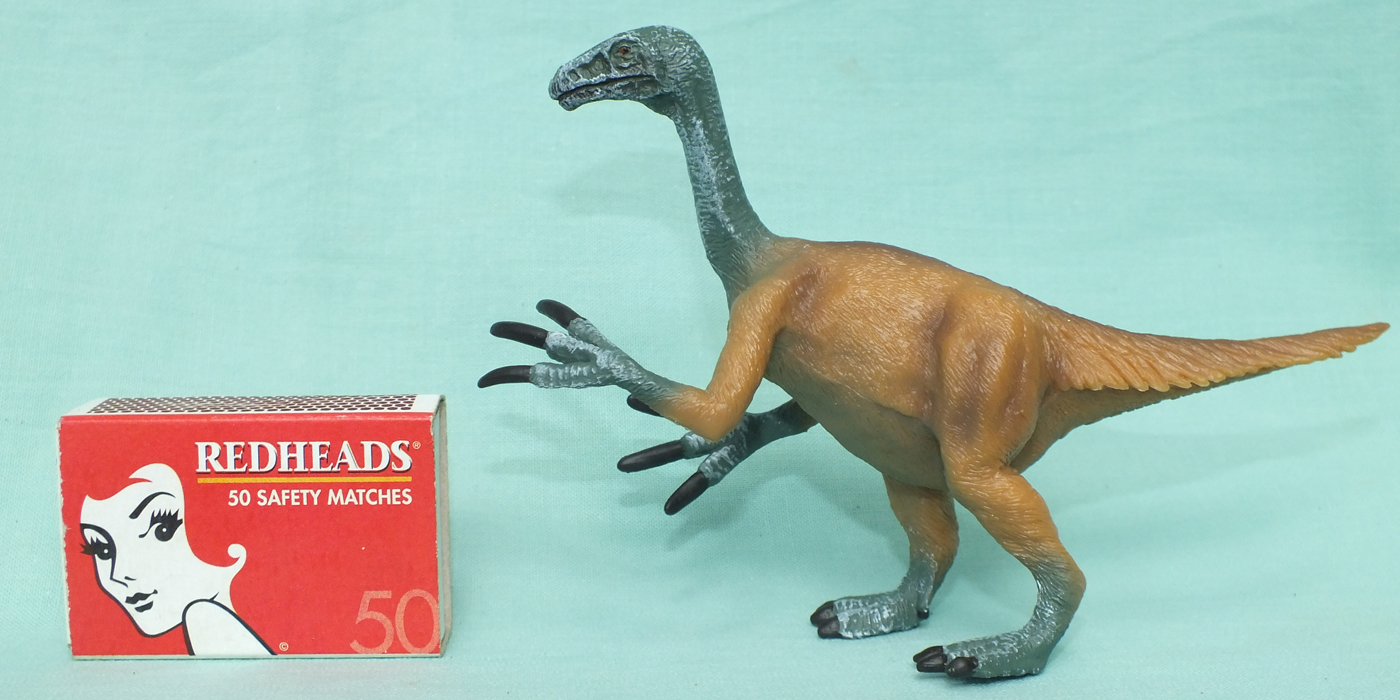
If you needed any more convincing that therizinosaurs are serious contenders for the world’s weirdest dinosaur competition, CollectA has depicted this animal with feathers. Whenever a dinosaur model has these sorts of adornments, I think it’s important to understand how good the supporting paleontological evidence for them is. There is no fossil evidence at all for the skin covering of Nothronychus, but due to an exceptional fossilisation event, we know that an ancestral therizinosaur called Beipiaosaurus had feathers of two sorts – short fur-like feathers all over the body (presumably for insulation) and some longer plumes along the arms and tail (presumably for display). Because later therizinosaurs evolved from a beipiaosaur-like ancestor, it’s assumed that they too had feathers – so a feathered Nothronychus, though not a proven fact, is a reasonable speculation. The feathers on the CollectA figure are very nicely sculpted, especially the display plumes on the tail. The sculptor has chosen to leave the neck and head feather-free, a bit like a vulture, which is purely speculative but it does give an interesting, characterful effect. Unfortunately, the colour choice for the feathers is very dull, consisting of a uniform sepia-brown, which is a shame, because the well-crafted feather detail doesn’t stand out as much as it could.
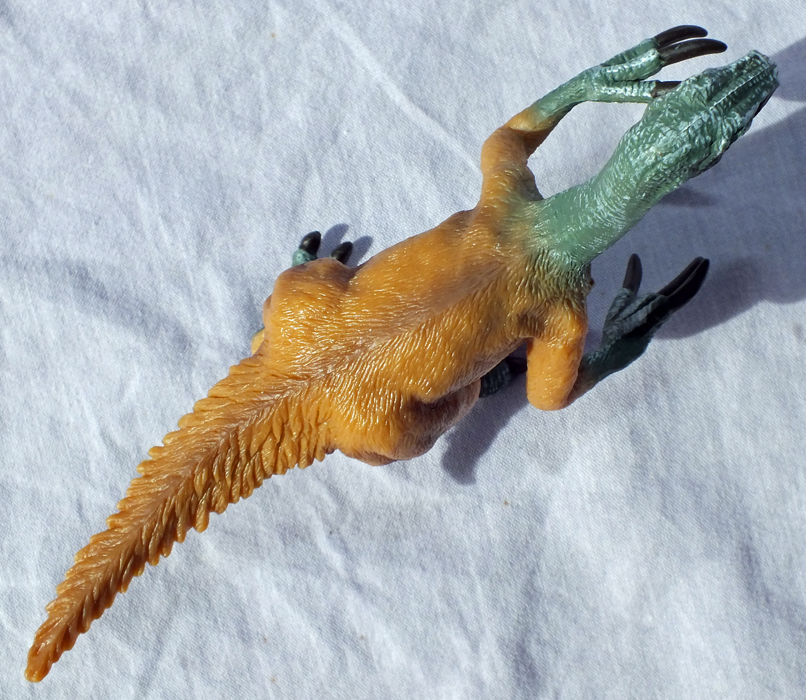
I suspect that many dinosaur fans are fond of therizinosaurs, because they are a “new” dinosaur group that have only come to be understood in the last few decades – with their unexpected strangeness they are thus symbolic of the “dinosaur renaissance” that has seen a complete transformation in our appreciation of the diversity and dynamism of dinosaurs in general. Unless I am mistaken, the CollectA Nothronychus is the only commercially available model of this interesting and important Therizinosaur species, and for this reason alone it should be of great interest to collectors (and parents seeking an educational toy). It is also a very attractive figure in its own right – the detail is exceedingly well done and the sculptor has done a fine job in creating the impression of a real, living animal. In fact, I personally like the CollectA Nothronychus more their comparable Therizinosaurus (judge for yourself by checking out Dan’s able review of the latter figure here). In any case, the CollectA Nothronychus is a smart little model for a very reasonable price, and you won’t be disappointed with it.
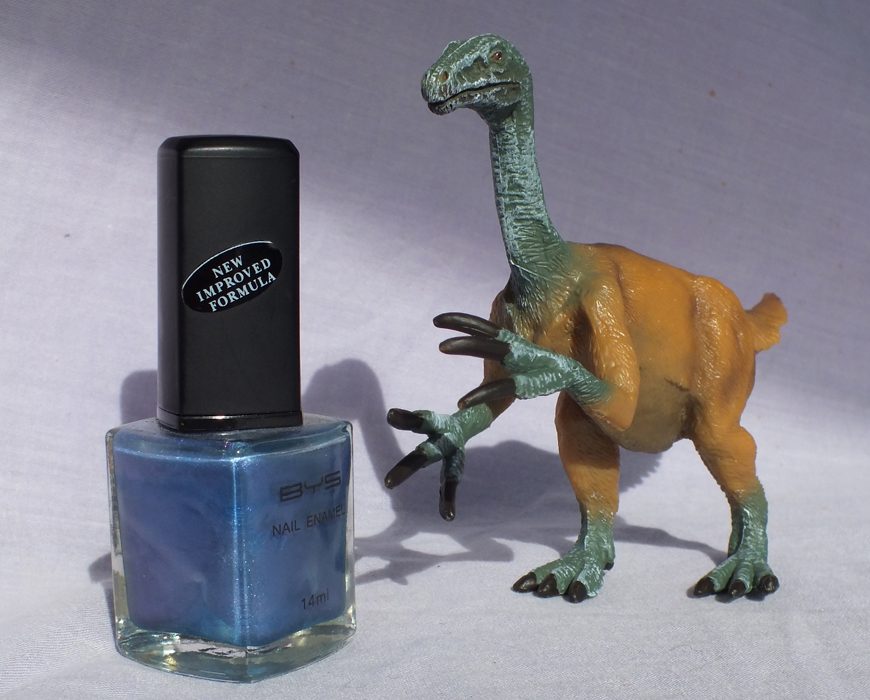
Here’s a fun-fact in to close with… as the above photograph illustrates, therizinosaurs were among the most enthusiastic consumers of nail polish in the entire Mesozoic era. The only problem was, it was a bit hard for them to manipulate the brush…
Available on Amazon.com here.
Disclaimer: links to Ebay and Amazon on the DinoToyBlog are affiliate links, so we make a small commission if you use them. Thanks for supporting us!




[…] previous review for the dinosaur toy blog was a Therizinosaur, so I spilled the obligatory ink in describing how these were among the strangest-looking dinosaurs […]
Some interesting comments here! In regards to the featherless neck and head, it’s very true that in birds this is typically associated with carrion feeding, for example vultures and the marabou stork. However, in the book “featherless dinosaurs” the artist Peter Schouten makes the point that for endothermic animals in the size range of Nothronychus, shedding excess body heat actually becomes more of a problem than retaining it, and hence he restored the animal with a (speculative) featherless neck as a cooling device (I think others have had the same idea in regard to Therizinosaur plumage).
I agree that the colour choice is rather disappointing on this model, especially as it just doesn’t do justice to the rather fine job the sculptor has done at detailing the feathers. This figure just cries out for a repaint! Perhaps in the colours of an Amazonian macaw…
Love the review, well done. Personally, I find the paint job rather unexciting, but it is a nice sculpt.
Technically, I mean vulture. “Buzzard” is (or was) American slang for a vulture–at least in every cowboy movie I ever saw as an impressionable youngster in the 1950’s.
Buzzards? You mean vultures, right? Because buzzards have normal feathered heads like the rest of their bodies http://www.grough.co.uk/lib/img/editorial/buzzard02.jpg
Great review. I love this little figure, but..
Isn’t it generally accepted that buzzards have that “creepy” bald head to facilitate inserting it into large carcasses to feed on viscera? Hardly appropriate here, although it makes for a very distinctive figure.
The figure has great merit despite belonging to the first
Collecta baking. However it has its shortcomings, moreover excellent review by Plesiosauria.
Not my review – credit goes to John Hall 🙂